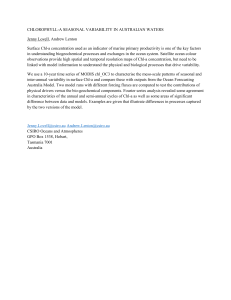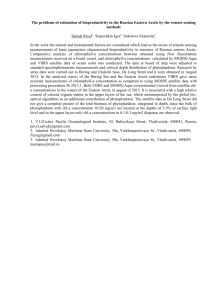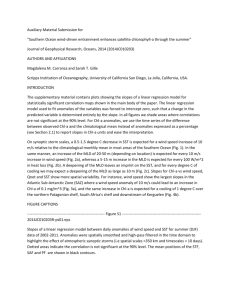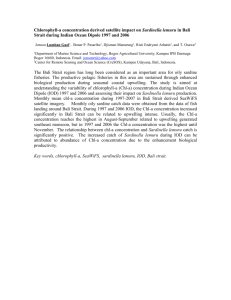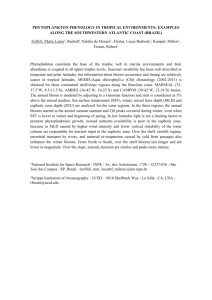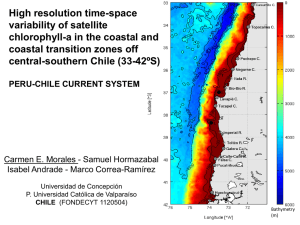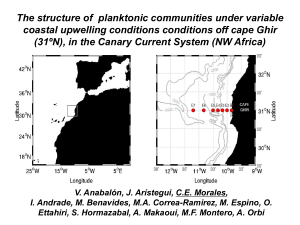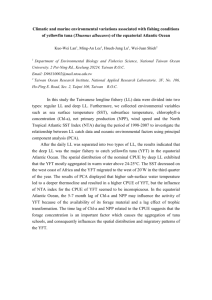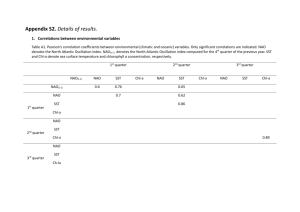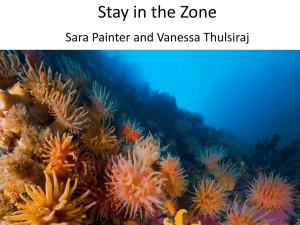Mixed-Layer Depth and Chl-a Variability in the Southern Ocean
advertisement
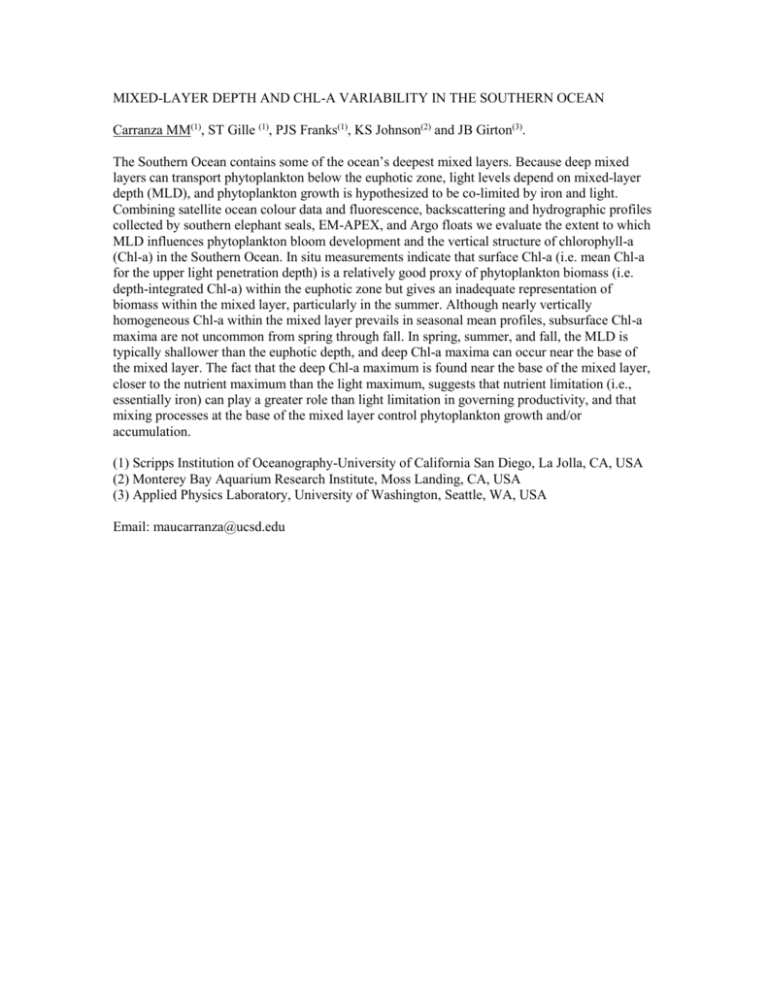
MIXED-LAYER DEPTH AND CHL-A VARIABILITY IN THE SOUTHERN OCEAN Carranza MM(1), ST Gille (1), PJS Franks(1), KS Johnson(2) and JB Girton(3). The Southern Ocean contains some of the ocean’s deepest mixed layers. Because deep mixed layers can transport phytoplankton below the euphotic zone, light levels depend on mixed-layer depth (MLD), and phytoplankton growth is hypothesized to be co-limited by iron and light. Combining satellite ocean colour data and fluorescence, backscattering and hydrographic profiles collected by southern elephant seals, EM-APEX, and Argo floats we evaluate the extent to which MLD influences phytoplankton bloom development and the vertical structure of chlorophyll-a (Chl-a) in the Southern Ocean. In situ measurements indicate that surface Chl-a (i.e. mean Chl-a for the upper light penetration depth) is a relatively good proxy of phytoplankton biomass (i.e. depth-integrated Chl-a) within the euphotic zone but gives an inadequate representation of biomass within the mixed layer, particularly in the summer. Although nearly vertically homogeneous Chl-a within the mixed layer prevails in seasonal mean profiles, subsurface Chl-a maxima are not uncommon from spring through fall. In spring, summer, and fall, the MLD is typically shallower than the euphotic depth, and deep Chl-a maxima can occur near the base of the mixed layer. The fact that the deep Chl-a maximum is found near the base of the mixed layer, closer to the nutrient maximum than the light maximum, suggests that nutrient limitation (i.e., essentially iron) can play a greater role than light limitation in governing productivity, and that mixing processes at the base of the mixed layer control phytoplankton growth and/or accumulation. (1) Scripps Institution of Oceanography-University of California San Diego, La Jolla, CA, USA (2) Monterey Bay Aquarium Research Institute, Moss Landing, CA, USA (3) Applied Physics Laboratory, University of Washington, Seattle, WA, USA Email: maucarranza@ucsd.edu
